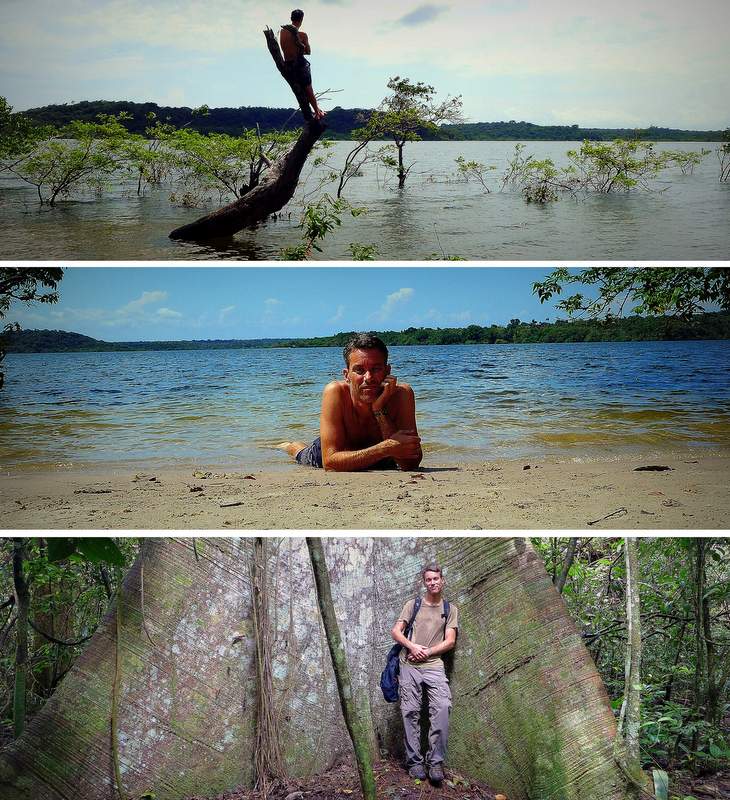
Brazil is big. Colossal. It’s actually larger than the continental USA. Yes… bigger than all the contiguous United States. It’s simply enormous. Amidst this bigness, nothing in Brazil has astounded me more than the immensity of the Amazon, the largest forest on our planet that comprises half of Brazil’s land mass.
My contact with the Amazon Basin has been mostly transitory. I’ve traveled a good portion of its expanse starting near the Bolivian border and arriving after 3½ days in Manaus, the central metropolis connected only to the rest of Brazil by boat or plane. I continued down the great Rio Amazonas for another few days until I reached the delta at Belém. In all, this 2,600 kilometer (1,615 mile) journey required nearly two weeks of travel.
Along the way I was constantly amazed by pretty much everything, from the vastness of the rivers which much of the time seem more like huge lakes, to the incongruity of the massive megalopolis of Manaus – an urban jungle trapped in the heart of Amazonia’s heady tropics.
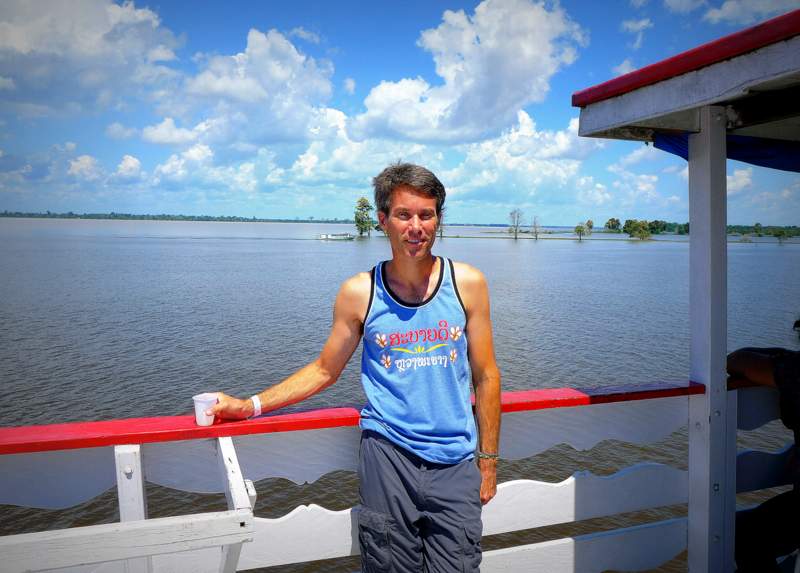
So I was hardly surprised to find a picture-perfect oasis just outside of Santarém, the main port city between Manaus and Belém. It sits where the Rio Tapajós meets the Rio Amazonas and forms a huge lagoon. With a white-sand island, Ilha do Amor (Island of Love), with glistening waters and barracas (food stalls) serving fresh-grilled fish and icy caipirinhas. And the nearby Tapajós National Forest offers ample opportunities for walks in the jungle and visits to traditional rubber communities. Alter do Chão is a perfect place to break up the down river journey so I spent a few days there in blissful repose.
Alter do Chão Town
The town of Alter do Chão doesn’t have a lot going on so there’s little to be preoccupied with: one real hostel to perch the hammock and meet fellow travelers, one market on the main plaza, one café for morning coffee, and a couple of adjacent restaurants on the plaza that share tables – they even provide two bills if, say, you want to order drinks from one but food from the other. In a word, Alter do Chão is chill.
Lagoon and Island
The Amazon isn’t just an ordinary river that flows along a lonely route through the jungle to the sea. It’s jam-packed with tributaries, islands, inlets and lagoons which make for a fascinating riverscape with constantly changing features.

Lago Verde (Green Lake) is a perfect example of the Amazon’s varied features. With three attractive fingers penetrating the tropical forest, Lago Verde is home to plenty of birds and other wildlife – and its secluded beaches were just steps away from my hostel.
The real draw of Alter do Chão is Ilha do Amor, a splendid stretch of sand just a $1 rowboat ride from the town dock. Half the year it is mostly submerged by the rainy season’s bursting waters but in July the waters start to recede, revealing bright sands and Caribbean-hued waters. While the waters were still high during my visit, they were ebbing quickly… in just a couple days the beach was growing perceptibly larger.
River Scenes

I spent a lot of time on the Rio Tapajós, one of the main feeder rivers to the Rio Amazonas. Every hour of the day presents a marvelous scene. Here is just a sampling of the many fine visual moments on the water.
Rubber Farming
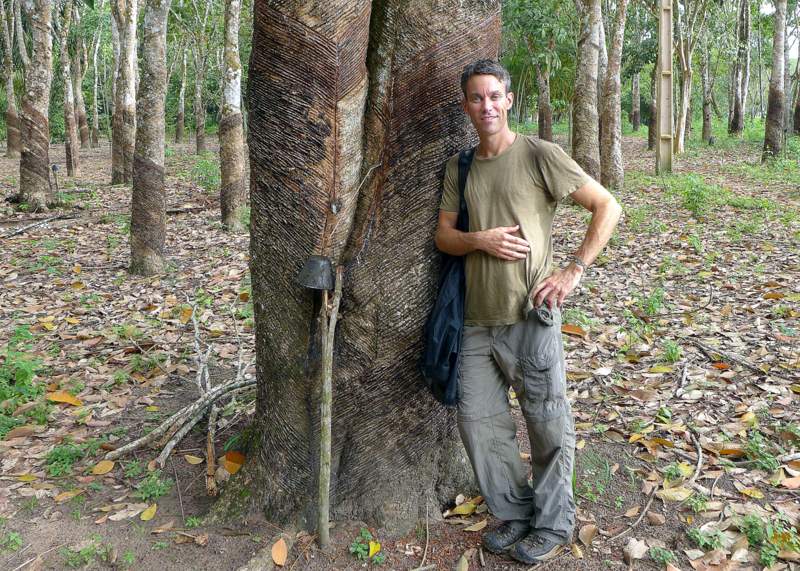
Just outside of Alter do Chão is the noteworthy Floresta Nacional (FLONA) do Tapajós (Tapajós National Forest), a 5,500 square kilometer (2,124 square miles) jungle reserve. It shelters not just Mother Nature but also the traditional communities that have struggled for centuries harvesting fish, rubber and castanha-do-pará (Brazil nuts).
Lately the communities, which remain largely closed to outsiders, have benefitted through modest ecotourism from the steady trickle of tourists (mostly backpackers) who pay a community access fee and hire local guides to enter the forest. For the moment, they are able to balance their traditional way of life and a controlled tourist invasion.

~ Milky rubber flows down the grooves cut in a Hevea brasiliensis tree
~ Among the curing and multi-colored sheets of latex
~ Ancient Singer sewing machines are modern technology in traditional Maguarí village
~ Cut latex pieces ready to be turned into waterproof bags
We enjoyed the warm reception in Maguarí village. We toured of the collective rubber factory where waterproof bags and sandals are made for local markets and in Germany as part of “fair trade” initiatives.
After our 18-kilometer (11 mile) hike through the jungle, our hunger was sated by a fresh, typical meal in one of the local homes. All ingredients were sourced locally – a special treat considering the delicious river fish was caught only a couple of hours prior.
A Walk in the Park – The Giant Amazonian Trees
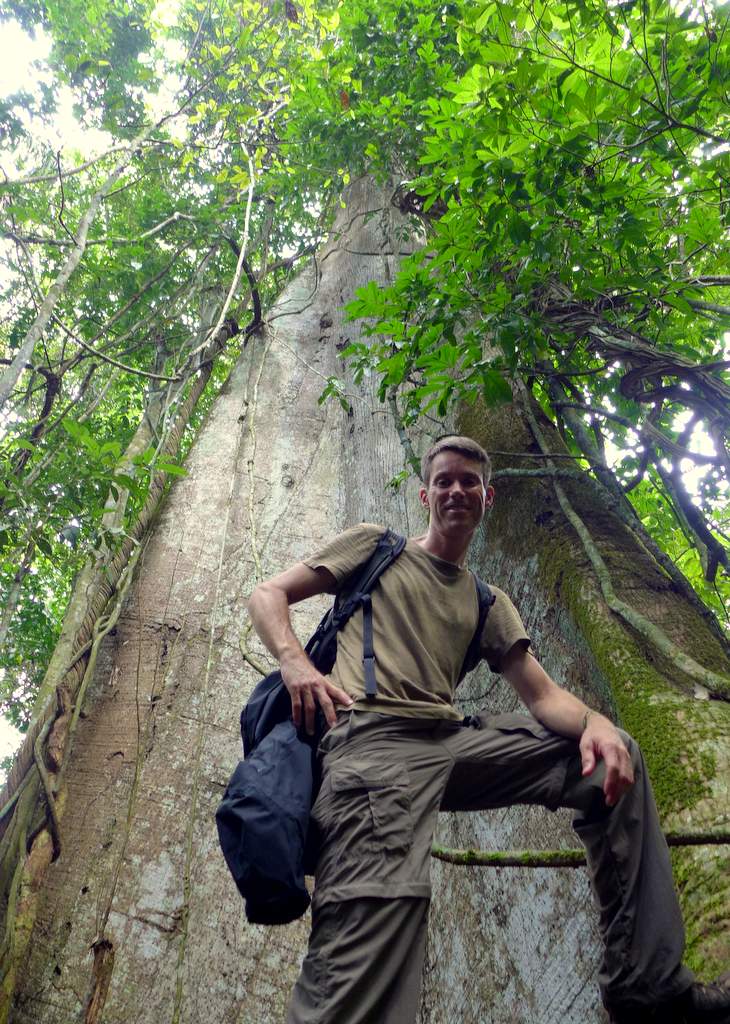
Literally the highpoint in the Tapajós National Forest are the gigantic old-growth trees. The regal Brazil nut and lofty apuí trees certainly were huge based on any standard, but the towering samaúma trees were astoundingly titanic. One prime specimen, known locally as vovô (“Grandfather”), is nearly a thousand years and with a trunk is so massive it takes 25 people with outstretched hands to completely encircle it. Needless to say, I was awestruck standing beneath this colossal beauty.
A Walk in the FLONA Park – Other
Our local guide from Maguarí village, Ananias, was one talkative dude. In addition to giving us the scoop on life in the village and the Amazon in general, he shows us dozens of medicinal trees and plants, including açaí palm berries packed with antioxidants, carapanauba and quinina (quinine) for malaria, mujãi branco for stomach bugs, piquiá for infections, and viagra (Viagra™) – yes, you read that correctly – for “energy”.
Considering that I didn’t spend a lot of time on land in the Amazon, it was a great crash-course in the natural features of the region. Ananias proved to be the perfect guide.
Food and Friends

Alter do Chão was so pleasurable because of the nice people I met there. Thanks to the popular hostel, there was no shortage of people to hang out with in our hammocks, or head into town for cocktails and meals.
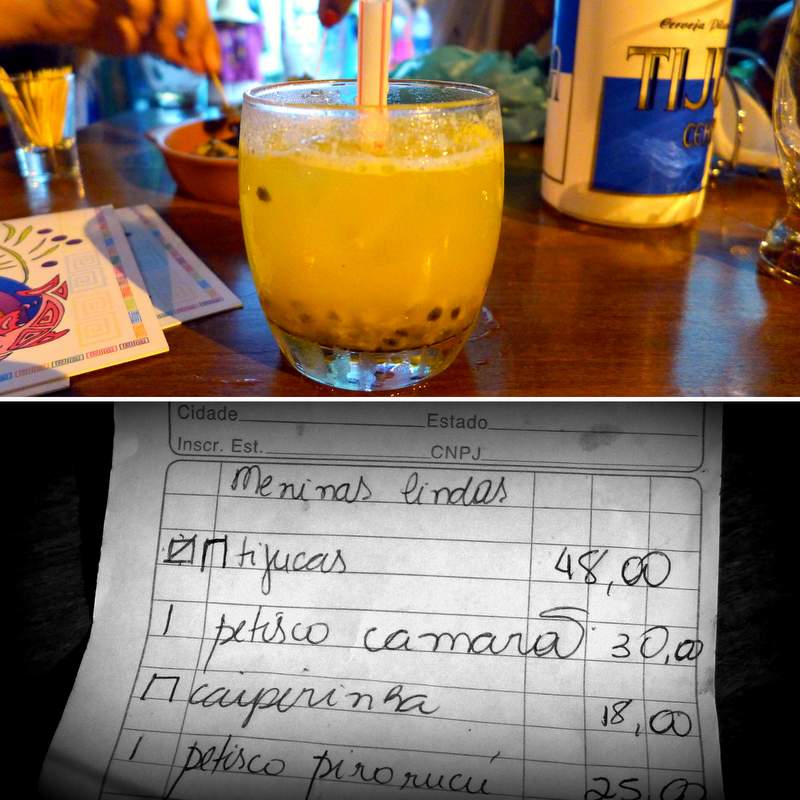
And as an added bonus, I delighted in food in Alter do Chão. Feasting on the three main river fish – pirurucú (which grows to a whopping 3 meters), tucunare and pacu – my pescetarian cravings were satisfied.

After my lonely days in Matto Grosso state to the south, it was a welcome return to travel companions. I simply would not have enjoyed myself so much if it weren’t for Richard from Germany (but born in Brazil), Alejandro from Italy, Nick from Australia/Canada, and Bruna from São Paulo.





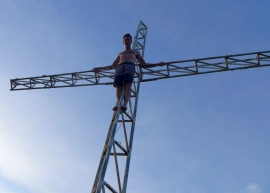
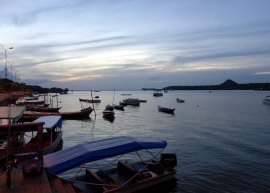


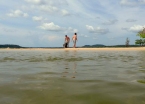






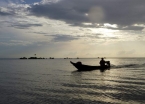
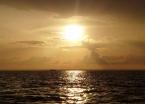


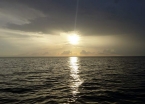


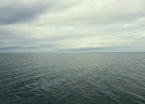
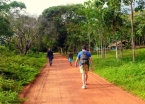



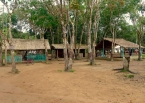
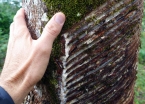








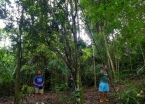
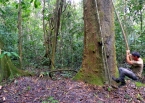

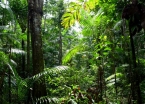

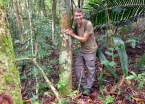

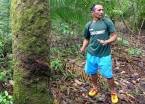

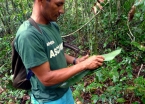


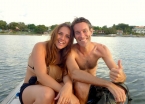





Wowzer! Wowzer! This world wonder, Rio Amazonas and forests — what to say. Mostly I’m swept away knowing you experienced this and can convey it to us with your writing and pictures. Gracias gracias, gracias for creating this blog for us. Love forever, Mom